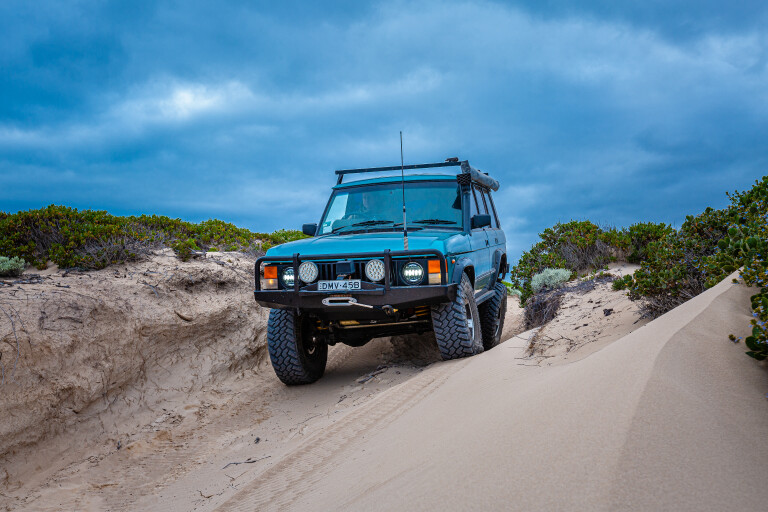
It’s not every day you see a Range Rover Classic on a remote track. Heck, it’s not like you even see them on a daily basis around the suburbs anymore. Which is a real shame, as there is just something cool about that Range Rover Classic shape, not to mention how ahead of their time they were from a driving point of view.
Rover fans will know the Range Rover Classic was usually powered by a 3.5L or 3.9L petrol V8 motor. It was regarded as an engine that sounded amazing, didn’t really go too well and drank petrol like it was free. There was also a factory diesel option, utilising an Italian VM Motori engine. Sadly, this didn’t set the world on fire performance or reliability wise, and is considered the ugly step child of the factory Rangie offerings.
So, what to do if you want the torque and fuel efficiency of a turbo-diesel engine, but the comfort and off-road ability of a Range Rover Classic? You can do what the owner of this stunning vehicle did, and swap in a 3.9L Isuzu 4BD1 engine from an ex-army Land Rover Perentie. Now that makes sense to us.

He didn’t just stop there though, as this motor is now turbo-charged producing an estimated 140hp and an eye-watering amount of torque down low.
The 4BD1 engine is a bit of a legend, it’s a heavy-duty truck motor which was decided upon by the Australian army to use in their Perentie line-up. Now that these vehicles are available to the general public for sale, this engine swap is a very attractive option for those looking to repower their older vehicles.
Parts are cheap, and they can handle a bit of boost if you want to turn the wick up. They feature minimal electronics, and are dead simple to work on. They are also as reliable as the sun, which is just what you want in a vehicle designed to see tough conditions while on duty.
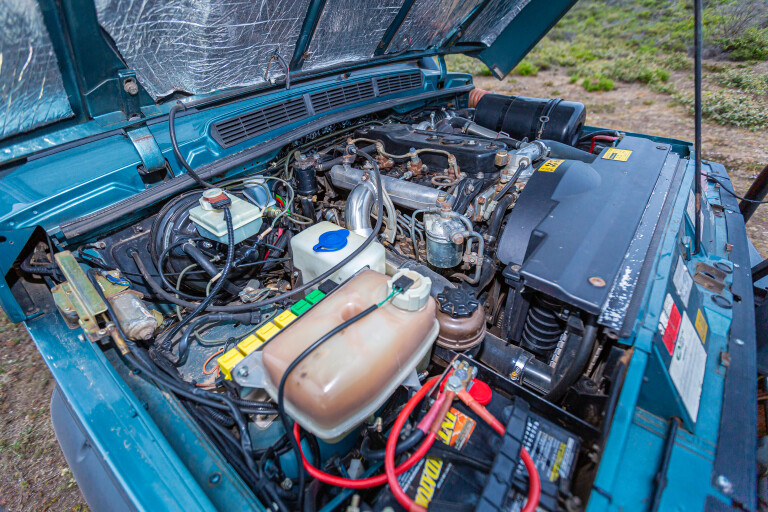
The now turbo-charged engine produces an eye-watering amount of torque down low
David Bellantonio is the owner of this fine example of a Classic Rangie, who undertook the ground up rebuild over the space of two-years. Don’t let the looks fool you though, this thing gets used; travelling to remote destinations such as his recent trip to the Flinders Ranges, and a jaunt across the Canning Stock Route before that.
“I wanted to build a vehicle that was capable of doing all things reasonably well, with reliability as a priority,” David tells us. “A daily driver, remote tourer and something for technical 4WDing all in one”.
David started with a 1985 Range Rover Classic chassis and a Vogue SE body, then set about a full mechanical rebuild, as well as ironing out any bugs along the way. Considering the Range Rover Classic platform has been around for such a long time, there is a considerable amount of knowledge out there, as well as upgraded parts to fix any weak points which are easy to track down locally and overseas.
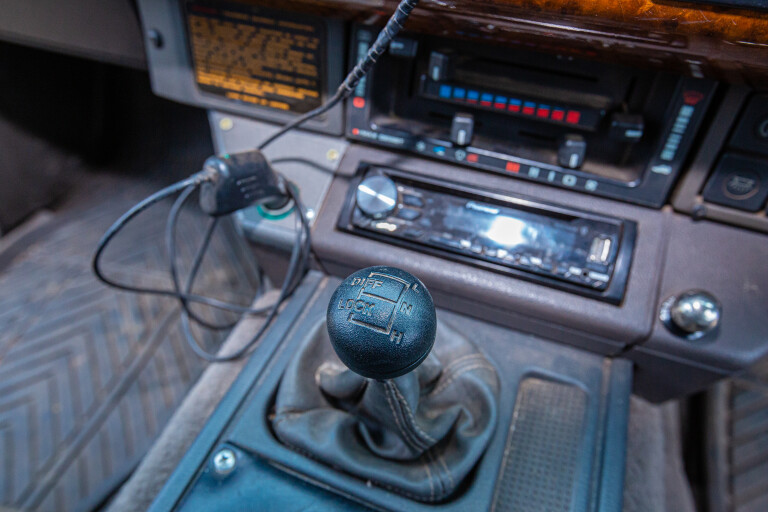
David became increasingly interested in building an older vehicle, to a higher standard, and cover his key requirements as best as possible. All for roughly the same price as a new dual cab ute.
“The best thing about my current vehicle is that it is mechanically very reliable, very simple with no computers and minimal electronics, it’s also capable and comfortable as you would expect from a Range Rover Classic,” David explains.
One such area that required improvement, is the driveline. Specifically, the differentials and axles as they are on the weak side when you add 35-inch tyres basically. Not to mention the amount of torque produced from the mighty 3.9L Isuzu motor.
David promptly sorted this out, with the use of Maxi Drive heavy-duty axles, Perentie CV joints, Maxi Drive axle flanges and a Maxi Drive rear locking differential with Eaton E Locker in the front. Differential ratios are 3.54 for anyone playing along at home.
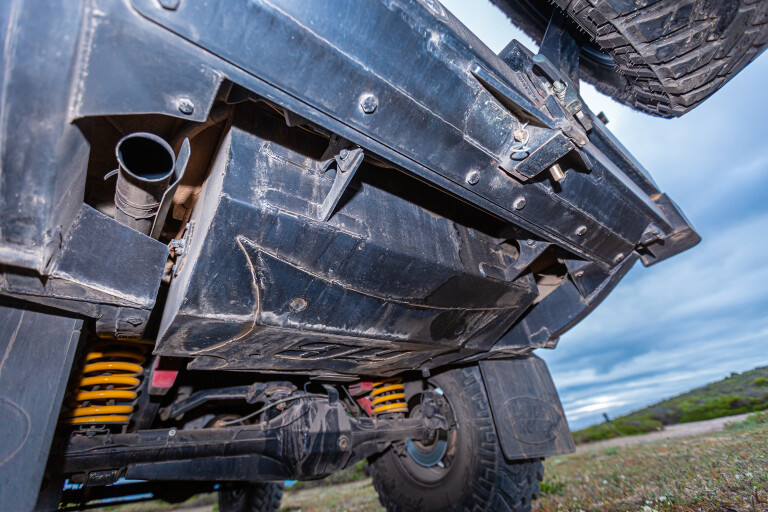
KLR in Sydney, who specialise in Rovers, supplied a bellhousing to mate the Isuzu motor to a HD R380 5-speed manual gearbox. This sends drive to the legendary LT230 transfer case. The conversion is a relatively simple one, as it is a path well-travelled these days. Having ready-to-run parts (such as the custom bellhousing) simplifies the process massively. But it’s never fair to call an engine conversion easy.
The get the most out of the engine, David had a Factory Isuzu turbo fitted on a factory turbo manifold. The engine is cooled by a Land Rover radiator, with an engine driven fan as well as two electric thermo fans as backup. An off the shelf exhaust system was never going to happen, so David opted for a custom 2.5” exhaust, and has fitted two fuel filters for peace of mind when filling up at outback servos.
From the start of the project, it was a requirement to have this vehicle engineer certified prior to registration. With so many custom built or modified parts it sometimes takes a bit of work and re-work until you get things just right. One example of the level of detail David went to was trialling brake pads.

The build started with a 1985 Range Rover Classic chassis and a Vogue SE body
After testing many options, he eventually settled on EBC Green Stuff pads, which he tells us made a huge difference to braking performance both in terms of initial bite and in thermal recovery. This was proven during the brake testing component of the vehicle testing for engineering sign off.
Quality components is a key theme in this build, as such David opted for a simple yet effective suspension system. The core ingredients consist of 50mm raised King Springs, mated to Koni Raid shock absorbers. As this is a tourer, daily driver and off-road play toy, getting the suspension right is extremely important, and David is happy with the results.
A 50mm body lift was also added, which helped fit the large 35” Nitto tyres mounted on 16x8 Performance alloys. Polyurethane radius and trailing arm bushes were also installed, and David upgraded to a set of heavy duty cranked trailing arms at the same time.
As you’d expect in a vehicle designed with long-distance touring in mind, there is a dual battery system and plenty of gauges to keep an eye on things. The second battery lives in the rear of the vehicle, with plenty of charging points to keep David’s devices topped up. A GME TX3350 UHF keeps him in contact with his convoy, while boost, EGT and water temp gauges keeps him in contact with his engine.
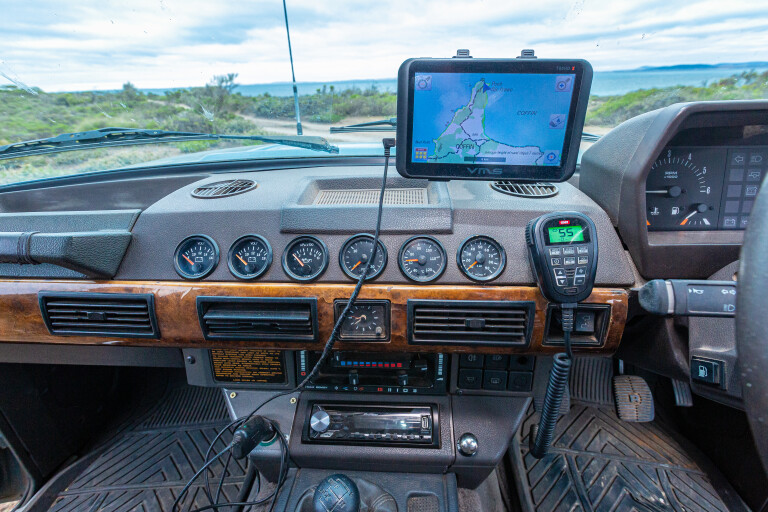
Frontal protection is essentially mandatory for any touring 4x4, and David’s Range Rover is no exception. He’s fitted an ARB winch bar with a custom front bash plate. Adorning the bull bar is a pair of LED spotlights and a 12,000lb winch, rounding out a very neat front-end package.
The rear bar is a custom-made unit, and has integrated reverse lights. It also has provisions for a tow bar, and swing away tyre carrier. David went with a custom rear bar, as the 50mm body lift would have made any commercially available unit not sit right leaving a 50mm gap. While the welder was fired up, David decided on a custom-made set of steel rock sliders, and a steel snorkel with Safari head on it.
One question we had to ask David, was why not just start with an ex-army Land Rover Perentie and build that up?
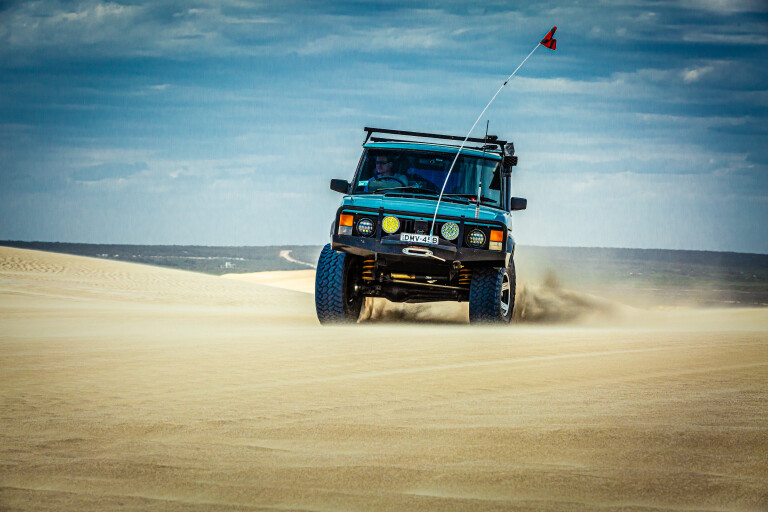
“The down-side to these vehicles as a daily driver or touring vehicle, is they are very agricultural,” David replied. “Comfort in all areas was not a priority for the army, and it takes lots of work and money to get them anywhere close to the level of a modern vehicle for basic comfort.”
By taking the best bits of a Perentie and combining them with the comfort of a Range Rover, David certainly has the best of both worlds.
So the proof is in the pudding. If you have ever dreamed of building an older touring vehicle, that can keep up with the big boys when the tracks get technical, it’s possible. You just need to put the work in, come up with a plan and double your budget.
It does bring up a very big question though: Would you rather be driving through the Victorian High Country in this Range Rover Classic or a stock-standard modern dual cab ute? I know what I’d pick.



COMMENTS